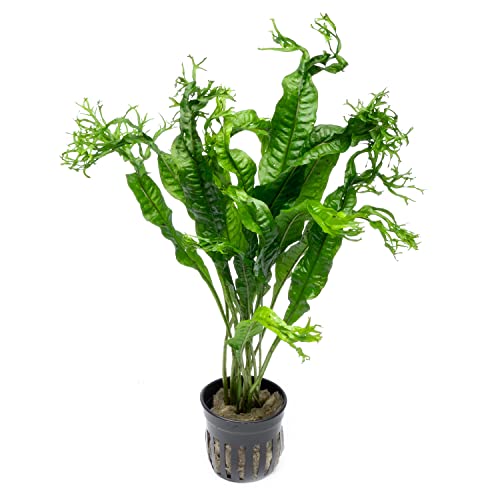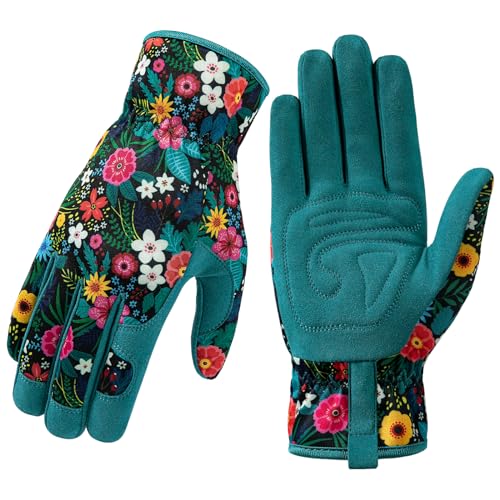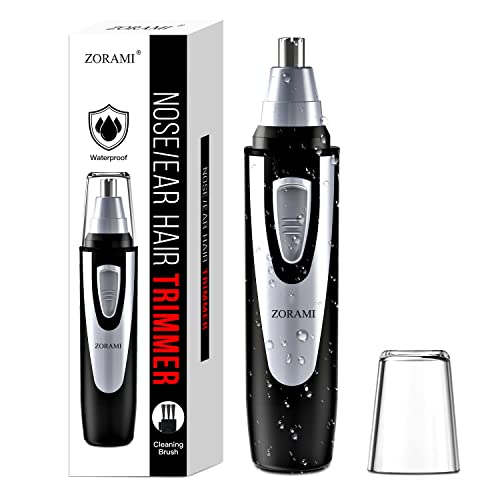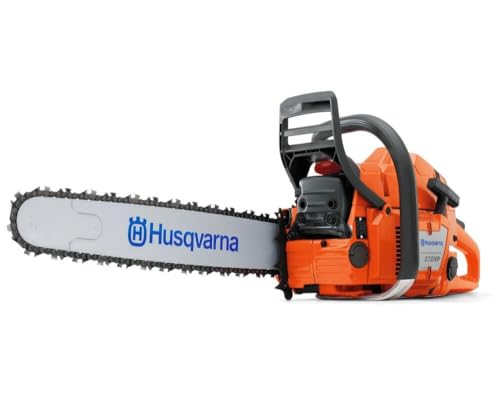Best Plant That Grows In Water
—
Looking to add a touch of greenery to your home without the fuss of soil? Plants that thrive solely in water offer a unique and low-maintenance solution.
Choosing the best plant that grows in water, however, can be overwhelming with the variety available. Not all aquatic plants are created equal; factors like ease of care, aesthetic appeal, and long-term viability vary significantly.
This review article aims to guide you through the selection process, highlighting crucial aspects to consider before making your purchase. We understand the importance of finding a plant that not only complements your space but also thrives in its aquatic environment.
We’ll focus on delivering insights into selecting the best plant that grows in water to ensure you get the most for your investment, emphasizing quality and value in every recommendation.
IN THIS ARTICLE
Top 10 Best Plant That Grows In Water Compared

🏆 BEST OVERALL 20 Bonsai Bowl Lotus Seeds (Precut
- High germination rate (95%)
- No dormancy period allows for year-round planting (above 16°C)
- Suitable for both indoor and outdoor environments
- Easy to plant and maintain, ideal for beginners
4.6/5
Check Price on Amazon

🥈 2ND RUNNER UP Costa Farms Dieffenbachia Live Plant Indoor
- Arrives potted and ready to display.
- Stylish pot enhances aesthetic appeal.
- Potential air-purifying benefits.
- Suitable as a long-lasting gift.
4.5/5
Check Price on Amazon

� BEST VALUE Easy to Grow Houseplants (6PK)
- Offers a variety of different plant types.
- Includes easy-to-care-for plants, good for beginners.
- Conveniently delivered to your doorstep.
- Good option for adding natural décor to your home.
4.5/5
Check Price on Amazon

Easy to Grow Houseplants (12 Pack) Live House Plants in Plant Containers
- Diverse selection of 12 plants provides variety.
- Includes relatively low-maintenance options.
- Convenient doorstep delivery.
- Offers options for natural home decor.
4.3/5
Check Price on Amazon

Plant Enzymes for Outdoor & Indoor Houseplants – Hydroponic Plant Food for Increased Nutrients – Bloom Booster Fertilizer & Root Stimulator for Plants
- High concentration of active enzymes.
- Rejuvenates soil and breaks down dead root matter.
- Promotes root vitality and nutrient absorption.
- Easy to use with simple dilution instructions.
4.7/5
Check Price on Amazon

zellajake Aquarium Grass Plants Seeds Love Grass 1
- Easy to grow, no need for CO2 or strong light.
- Can grow in various substrates like soil, sand, and gravel.
- Relatively fast growth, with sprouts expected in 5-7 days.
- Converts carbon dioxide into oxygen.
4.4/5
Check Price on Amazon

Grow More Lucky Bamboo Fertilizer (2-2-2) – 8oz of
- Formulated specifically for lucky bamboo plants.
- Balanced 2-2-2 NPK ratio.
- Suitable for indoor and outdoor use.
- Easy to understand application instructions.
4.8/5
Check Price on Amazon

Purple Colorful Tillandsia Air Plants – Long Lasting Color Enhanced Live Tillandsia Succulent House Plants – Home and Garden Decor – Easy Care Indoor and Outdoor (Brachycaulos Abdita
- Visually appealing with diverse and vibrant colors.
- Versatile for use in terrariums, planters, and event decorations.
- Easy to care for with simple watering instructions.
- No soil required, making them a clean and convenient option.
4.5/5
Check Price on Amazon

SubstrateSource Java Fern Live Aquarium Plants – Potted Freshwater Plant for Fish Tanks – Beginner Friendly
- Visually appealing with unique split leaves.
- Relatively easy to care for, suitable for beginners.
- Low light requirements.
- Doesn’t require CO2 supplementation.
4.4/5
Check Price on Amazon

Marcus Fish Tanks 6 Jungle Val – Jungle Vallisneri
- Beginner-friendly and easy to grow.
- Live arrival guarantee (with conditions).
- Responsive customer support.
- Seller provides advice on minimizing melt-back after transplant.
4.3/5
Check Price on Amazon
Detailed Reviews of the Best Plant That Grows In Water
20 Bonsai Bowl Lotus Seeds (Precut – High germination rate (95%)

This lotus seed product aims to provide an accessible way to grow lotus plants both indoors and outdoors. The seeds are marketed towards beginners and experienced gardeners alike, highlighting their ease of planting and maintenance. The description emphasizes the plant’s aesthetic appeal, noting the beauty of the flowers and lily pads, as well as its potential benefits for fish habitats in ponds.
The high germination rate (95%) and the lack of a dormancy period are presented as advantages, allowing for year-round planting in suitable water temperatures. Made in the USA, these seeds are also promoted as thoughtful gifts. The seller also provides a satisfaction guarantee for damaged packages, insufficient quantities or germination issues.
Pros
- High germination rate (95%)
- No dormancy period allows for year-round planting (above 16°C)
- Suitable for both indoor and outdoor environments
- Easy to plant and maintain, ideal for beginners
- Aesthetically pleasing flowers and lily pads
- Potential to create good fish habitat in ponds
Cons
- Requires a consistently warm water temperature (above 16°C) for successful germination and growth.
- Success can depend on specific environmental factors and growing experience.
Costa Farms Dieffenbachia Live Plant Indoor – Arrives potted and ready to display.

The Dieffenbachia plant arrives potted and ready to display, making it an easy addition to any room. It’s marketed as an air purifier and mood enhancer, aligning with known benefits of indoor plants. The plant’s aesthetic appeal makes it a suitable decor piece for various settings, from living rooms to offices.
As a gift, it offers a longer-lasting alternative to flowers. The provided pot is stylish and complements the plant’s appearance. However, potential buyers should research Dieffenbachia care, ensuring they can provide the appropriate environment for its long-term health.
Overall, it presents a convenient and visually pleasing way to incorporate greenery into indoor spaces.
Pros
- Arrives potted and ready to display.
- Stylish pot enhances aesthetic appeal.
- Potential air-purifying benefits.
- Suitable as a long-lasting gift.
- Can improve mood and reduce stress.
Cons
- Requires proper care and environment for long-term health.
- Dieffenbachia plants are toxic to pets.
Easy to Grow Houseplants (6PK) – Offers a variety of different plant types.

This 6-pack of live houseplants offers a nice variety for adding greenery to your home or gifting to plant enthusiasts. The selection includes easy-to-care-for options like Pothos and Fittonia, making it suitable for beginners. The plants arrive in 2″ containers, so be prepared to repot them soon after arrival.
The mix of plants may vary, which adds an element of surprise, but also means you might not receive specific plants you were hoping for. Consider the cold weather warning seriously, as freezing temperatures can damage the plants during shipping. Overall, it’s a decent option for expanding your indoor plant collection, but manage your expectations regarding the exact plant varieties.
Pros
- Offers a variety of different plant types.
- Includes easy-to-care-for plants, good for beginners.
- Conveniently delivered to your doorstep.
- Good option for adding natural décor to your home.
Cons
- Plants arrive in small 2″ containers and will need repotting.
- Plant selection is random and may vary from description.
Easy to Grow Houseplants (12 Pack) Live House Plants in Plant Containers – Diverse selection of 12 plants provides variety.

This grower’s choice plant pack offers a diverse selection of 12 plants in 2″ containers, delivered directly to your door. The variety may include Fittonia, Pothos, Dieffenbachia, Aralia, and other green plants, potentially expanding to spider plants, heart leaf philodendrons, or peperomias. These plants are intended for indoor use, serving as natural home decor.
The selection leans towards relatively low-maintenance options. However, it’s crucial to consider the cold weather warning; temperatures below freezing can damage the plants during transit. The plants may vary from pack to pack due to growers choice selection.
Pros
- Diverse selection of 12 plants provides variety.
- Includes relatively low-maintenance options.
- Convenient doorstep delivery.
- Offers options for natural home decor.
Cons
- Plant selection varies, so specific types are not guaranteed.
- Vulnerable to damage during shipping in cold weather.
Plant Enzymes for Outdoor & Indoor Houseplants – Hydroponic Plant Food for Increased Nutrients – Bloom Booster Fertilizer & Root Stimulator for Plants – High concentration of active enzymes.

This enzyme supplement is designed to improve plant health and nutrient uptake, particularly in coco coir and hydroponic systems. It boasts a high concentration of active enzymes, claiming to rejuvenate soil by breaking down dead organic matter and promoting a healthier root system. The product aims to cleanse roots for balanced nutrient absorption, potentially reviving struggling plants and encouraging reblooming.
It is designed for use throughout the plant’s entire growth cycle, with a simple dilution rate of 1 ml per gallon of water. While seemingly promising, individual results may vary based on plant type, growing conditions, and existing nutrient regimens. Proper application and monitoring are recommended to assess its effectiveness.
Pros
- High concentration of active enzymes.
- Rejuvenates soil and breaks down dead root matter.
- Promotes root vitality and nutrient absorption.
- Easy to use with simple dilution instructions.
- Suitable for coco coir, hydroponics, aquaponics, and potting soil.
Cons
- Effectiveness may vary depending on plant type and growing conditions.
- Requires consistent application throughout the entire growth cycle.
zellajake Aquarium Grass Plants Seeds Love Grass 1 – Easy to grow, no need for CO2 or strong light.

These aquarium plant seeds promise an easy way to create a lush underwater landscape. The claim of being easy to grow without CO2 or strong light is appealing, especially for beginners. The instructions emphasize maintaining a specific water temperature (28℃-33℃ or 82℉) and avoiding covering the seeds with mud.
Sprouting is expected within 5-7 days, with a complete landscape in about 15 days. The added benefit of converting carbon dioxide into oxygen and absorbing nitrates is a significant advantage for maintaining a healthy aquarium ecosystem. However, success seems heavily dependent on following the instructions precisely, as mentioned in the product description.
This might be a drawback for those who prefer a more forgiving planting process. Overall, the concept is promising, but results likely vary based on adherence to the recommended planting procedure.
Pros
- Easy to grow, no need for CO2 or strong light.
- Can grow in various substrates like soil, sand, and gravel.
- Relatively fast growth, with sprouts expected in 5-7 days.
- Converts carbon dioxide into oxygen.
- Absorbs nitrates produced by fish waste.
Cons
- Requires a specific, potentially high water temperature (28℃-33℃ or 82℉).
- Growth success is heavily dependent on following instructions carefully.
Grow More Lucky Bamboo Fertilizer (2-2-2) – 8oz of – Formulated specifically for lucky bamboo plants.

Grow More Lucky Bamboo Food is a fertilizer designed specifically for lucky bamboo plants (Dracaena Sanderiana). The 2-2-2 NPK ratio aims to provide a balanced nutrient mix for foliage growth, root development, and overall plant health. It’s designed for both indoor and outdoor use, offering versatility in application.
The instructions recommend regular water changes, weekly in summer and 2-3 times a month in winter, suggesting a need for diligent maintenance. The product is manufactured in the USA, which might appeal to consumers who prioritize domestically produced goods. Overall, it seems like a decent option if you’re looking for a dedicated fertilizer for your lucky bamboo.
Pros
- Formulated specifically for lucky bamboo plants.
- Balanced 2-2-2 NPK ratio.
- Suitable for indoor and outdoor use.
- Easy to understand application instructions.
- Made in the USA.
Cons
- Requires regular water changes in addition to fertilizer application.
- Limited information about long-term effectiveness.
Purple Colorful Tillandsia Air Plants – Long Lasting Color Enhanced Live Tillandsia Succulent House Plants – Home and Garden Decor – Easy Care Indoor and Outdoor (Brachycaulos Abdita – Visually appealing with diverse and vibrant colors.

This assorted collection of colored air plants offers a unique and vibrant aesthetic for various indoor and outdoor spaces. The plants arrive with a diverse range of sizes, from 1-4 inches in width and 1-12 inches in height, depending on the species. The color treatments vary, ranging from subtle blushing on some varieties to more intense applications on others, which may appeal to different aesthetic preferences.
The included care instructions are straightforward, emphasizing weekly soaking and bright, indirect light, making them relatively low-maintenance. While the dye is advertised as safe, the longevity of the color and its potential impact on the plant’s overall health over extended periods may be a consideration.
Pros
- Visually appealing with diverse and vibrant colors.
- Versatile for use in terrariums, planters, and event decorations.
- Easy to care for with simple watering instructions.
- No soil required, making them a clean and convenient option.
- Includes a care instruction card for beginners.
- Health guarantee offers assurance of receiving healthy plants.
Cons
- The artificial coloring may not appeal to all buyers.
- Long-term effect of dye on plant health is not fully addressed.
SubstrateSource Java Fern Live Aquarium Plants – Potted Freshwater Plant for Fish Tanks – Beginner Friendly – Visually appealing with unique split leaves.

The Java Fern Windelov is a visually appealing aquatic plant suitable for various aquarium setups. Its distinctive split leaves create a bushy appearance, and under optimal lighting, the tips may display an attractive orange hue. This plant is relatively easy to care for, requiring minimal light and no CO2 supplementation, making it an excellent option for beginners.
The plant is shipped in a 2″ pot, rooted in wool that needs to be removed before planting. As an epiphytic species, it thrives when attached to hardscape elements like driftwood or stones, but it’s crucial to ensure the rhizomes remain above the substrate to prevent rotting. The sizes may vary as it arrives from 4-6″.
Pros
- Visually appealing with unique split leaves.
- Relatively easy to care for, suitable for beginners.
- Low light requirements.
- Doesn’t require CO2 supplementation.
- Epiphytic nature allows for versatile placement in the aquarium.
Cons
- Size may vary upon arrival.
- Rhizomes need to be kept above the substrate to prevent rotting.
Marcus Fish Tanks 6 Jungle Val – Jungle Vallisneri – Beginner-friendly and easy to grow.

The 6 Jungle Val aquatic plants are marketed as beginner-friendly and easy to grow, which seems accurate based on the product description. The seller emphasizes live arrival, offering replacements if plants arrive dead, provided the buyer adheres to temperature guidelines (above 30F). It’s important to note the disclaimer about potential “melting back” after transplantation; the seller recommends trimming the tops upon arrival to mitigate this.
Communication with the seller is encouraged for any questions or concerns. Overall, the product description sets reasonable expectations, especially concerning the initial acclimation period for these plants. It is crucial to check the weather forecast before ordering to ensure the plants’ survival during shipping.
Pros
- Beginner-friendly and easy to grow.
- Live arrival guarantee (with conditions).
- Responsive customer support.
- Seller provides advice on minimizing melt-back after transplant.
Cons
- Susceptible to damage during extreme temperatures (below 30F).
- May experience melt-back after transplant.
Buying Guide: What to Look For in a Best Plant That Grows In Water
Choosing the Right Plant for Your Needs
When selecting the best plant that grows in water, consider your specific environment and goals. Are you looking for an indoor plant, an aquarium addition, or a pond feature? For indoor displays, consider options like lucky bamboo or Dieffenbachia (although only the roots of Dieffenbachia should be submerged). Aquarium enthusiasts might explore Java Fern or Jungle Val. For outdoor ponds, lotus seeds offer beautiful flowers and lily pads, creating a potential habitat for fish. Understanding your needs will narrow down the vast selection of plants that thrive in water.
Factors to Consider: Light, Maintenance, and Aesthetics
Light requirements vary significantly among plants that grow in water. Java Fern thrives in low light, while lotus require ample sunlight. Maintenance levels also differ; some plants, like lucky bamboo, are incredibly low-maintenance, while others may require more attention. Finally, consider the aesthetic appeal. Do you want vibrant colors, unique foliage, or flowering plants? Air plants offer colorful options without needing soil. Selecting a plant that aligns with your lifestyle and aesthetic preferences is crucial to long-term enjoyment. Finding the best plant that grows in water for you is a personal journey.
Types of Plants That Grow in Water: A Detailed Overview
Several categories of plants excel in aquatic environments. Aquarium plants like Java Fern and Jungle Val purify water and provide shelter for fish. Potted plants such as lucky bamboo, with the roots in water, add a touch of greenery to indoor spaces. Air plants, though not fully submerged, thrive in humid environments and can be misted regularly. Lotus plants are ideal for ponds, creating a vibrant ecosystem. Each type offers unique benefits and requirements, making it essential to research before making a purchase to find the best plant that grows in water for your situation.
Frequently Asked Questions about Best Plant That Grows In Water
What are the easiest plants to grow in water for beginners?
Lucky bamboo is an excellent choice for beginners due to its low maintenance requirements. It thrives in indirect light and only needs its water changed every few weeks. Java Fern is another easy option, especially for aquariums, as it tolerates low light and doesn’t require CO2 supplementation. These plants are forgiving and can withstand some neglect, making them ideal for those new to growing plants in water. The ease of care makes them a popular choice, especially for those seeking a hands-off approach to indoor gardening or aquarium keeping, offering a rewarding experience without demanding constant attention.
How do I care for lucky bamboo growing in water?
Lucky bamboo prefers indirect sunlight and filtered water. Change the water every 2-4 weeks to prevent algae growth. Avoid using tap water, which can contain chlorine and other chemicals harmful to the plant. Use filtered water or let tap water sit out for 24 hours before using it. A balanced fertilizer formulated for lucky bamboo, such as a 2-2-2 NPK ratio, can be added sparingly to promote healthy growth. Ensure the roots are submerged in water, but avoid submerging the leaves. These simple steps will keep your lucky bamboo thriving.
Can I grow air plants in water?
While air plants don’t grow *in* water in the traditional sense, they require regular watering to stay healthy. Submerge them completely in water for 15-30 minutes every 1-2 weeks. After soaking, gently shake off any excess water and allow them to dry upside down in a well-ventilated area. Avoid leaving them in standing water, as this can lead to rot. Misting them occasionally between soakings can also help maintain adequate humidity. The best plant that grows in water for you might be an air plant if you’re looking for something unique.
What are the benefits of growing plants in water?
Growing plants in water can be a low-maintenance and aesthetically pleasing way to add greenery to your home. Hydroponics, a method of growing plants without soil, can lead to faster growth and increased yields. Aquarium plants help purify water and provide oxygen for fish. Plants that grow in water can also improve air quality and create a more relaxing and inviting atmosphere. The convenience and potential health benefits make them a popular choice for many plant enthusiasts.
How do I choose the right aquarium plants?
Consider the size of your aquarium, the lighting conditions, and the needs of your fish when selecting aquarium plants. Java Fern and Anubias are good choices for low-light tanks, while plants like Amazon Sword require more light. Ensure the plants are compatible with your fish; some fish may eat or uproot certain plant species. Research the specific needs of each plant before adding it to your aquarium. Selecting the right plants will create a healthy and beautiful aquatic environment.
What is the best fertilizer for plants growing in water?
The best fertilizer depends on the specific plant. For lucky bamboo, a balanced 2-2-2 NPK fertilizer is ideal. For hydroponic systems, use a fertilizer specifically formulated for hydroponics. Aquarium plants benefit from liquid fertilizers that contain micronutrients like iron and potassium. Avoid over-fertilizing, as this can lead to algae growth. Always follow the instructions on the fertilizer label. Using the right fertilizer ensures your plants receive the nutrients they need to thrive.
How do I prevent algae growth in my water plants?
Algae growth can be a common problem with plants growing in water. To prevent it, avoid over-fertilizing, provide adequate light (but not excessive direct sunlight), and change the water regularly. Adding algae-eating snails or fish to an aquarium can also help control algae growth. Ensure good water circulation to prevent stagnant areas where algae can thrive. Regularly cleaning the container or aquarium will also help remove algae buildup.
Can I use tap water for my water plants?
Tap water can contain chlorine and other chemicals that are harmful to some plants. It’s best to use filtered water or let tap water sit out for 24 hours to allow the chlorine to evaporate. For sensitive plants, consider using distilled water. Always check the water quality to ensure it’s suitable for your specific plant species. Using the correct water will help your plants thrive.
What should I do if my water plant starts to turn yellow or brown?
Yellowing or browning leaves can indicate several issues, such as nutrient deficiencies, overwatering, or underwatering. Check the plant’s specific needs and adjust your care accordingly. Ensure the plant is receiving adequate light and that the water is clean. If the issue persists, consider using a balanced fertilizer or repotting the plant in fresh water. Identifying the root cause and addressing it promptly is crucial to saving your plant.
How often should I change the water for my water plants?
The frequency of water changes depends on the plant and the size of the container. For lucky bamboo, change the water every 2-4 weeks. For aquariums, perform partial water changes (25-50%) every 1-2 weeks. In hydroponic systems, change the nutrient solution according to the manufacturer’s instructions. Regularly monitoring the water quality and making adjustments as needed will help ensure your plants stay healthy.
Conclusion: The Final Verdict
The 20 Bonsai Bowl Lotus Seeds (Precut these lotus seeds offer a promising opportunity to cultivate beautiful aquatic plants. with a high germination rate and ease of planting, it’s a worthwhile option for both beginners and seasoned gardeners, but remember to ensure the correct environmental conditions for best results.





